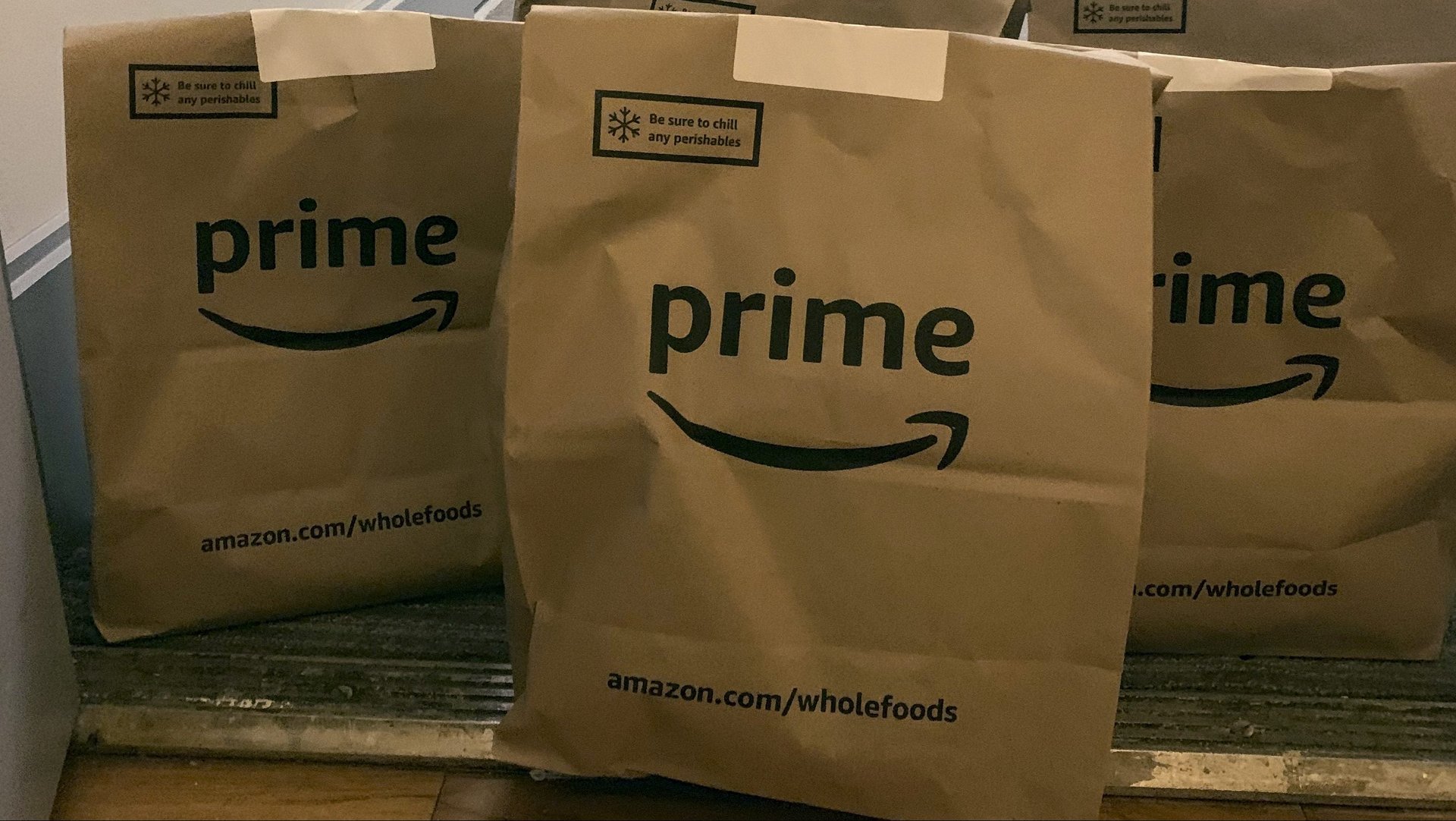Amazon isn’t accepting new grocery customers while it strains to meet current demand
If you’re not already a customer of Amazon’s grocery delivery services, offered through Amazon Fresh or its Whole Foods supermarkets, you’ll now have to wait your turn to become one.


If you’re not already a customer of Amazon’s grocery delivery services, offered through Amazon Fresh or its Whole Foods supermarkets, you’ll now have to wait your turn to become one.
In a post to its blog yesterday, the company announced some new policies to mitigate the problems it’s facing from the overwhelming demand it has experienced during the Covid-19 outbreak, combined with limits in its warehouses from following social-distancing and safety protocols. For the time being, new customers for grocery delivery have to sign up for an invitation. Amazon is also launching a feature for existing customers to secure a place in line for delivery on a first-come, first-served basis.
The decision to make anyone wait in line to become an Amazon customer is a notable shift for a company engineered to draw in new shoppers (Quartz member exclusive) and get them hooked on its ecosystem of services. But Amazon already risks alienating current subscribers of its Prime membership program as cracks appear in its normally fast and efficient delivery and logistics network.
Like other online grocers, it has been under tremendous strain from the huge spike in shoppers observing social-distancing guidelines and avoiding stores during the pandemic. Delivery times for groceries are mostly unavailable and open slots will appear without warning, creating a chaotic and frustrating process that leaves shoppers having to constantly check the site in hopes of getting an order.
The new measures are meant to help. Along with those already mentioned, Amazon will adjust store hours for select Whole Foods locations to let them focus solely on fulfilling online grocery orders. The new grocery store it recently opened in Woodland Hills, California, will exclusively fill e-commerce orders for now too.
Amazon has taken various steps in recent weeks to help it keep up with the growing reliance on its services. The company has pushed back delivery times for non-essential items, suspended shipments of non-essentials to its warehouses, and today it announced it will hire 75,000 new workers. Those are in addition to the more than 100,000 it said it had hired since mid-March, and bring its total full- and part-time employees to more than 950,000, based on data it reported at the end of 2019.
Having enough staff is critical for Amazon to keep operations running smoothly in its fulfillment centers. Many warehouse workers have voiced concerns about workplace safety, such as a lack of protective equipment, and as much as 30% in some cases have stopped showing up to work, according to the New York Times. Amazon says it has responded with greater efforts to protect workers.
Meanwhile, due to the changes it’s made in its operations after the outbreak, Amazon raised the number of orders it can fulfill by 60%, Stephenie Landry, vice president of Amazon grocery, wrote in the blog post. Though it still expects finding open delivery times will remain challenging for shoppers. Its aim is to increase its capacity to deliver to more shoppers, and also its capacity to accept new ones.
This story has been updated to clarify that safety protocols have also limited Amazon’s ability to fulfill orders.